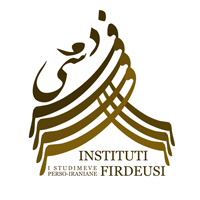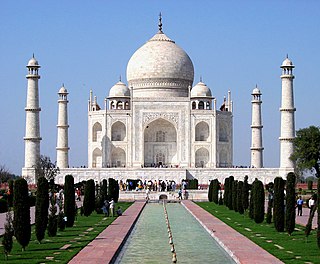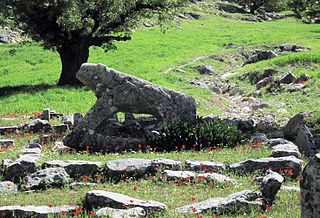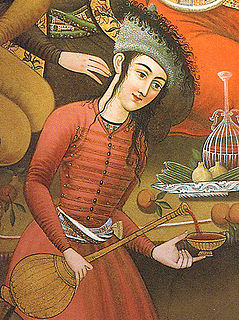 W
WAchaemenid architecture includes all architectural achievements of the Achaemenid Persians manifesting in construction of spectacular cities used for governance and inhabitation, temples made for worship and social gatherings, and mausoleums erected in honor of fallen kings. The quintessential feature of Persian architecture was its eclectic nature with elements of Assyrian, Egyptian, Median and Asiatic Greek all incorporated, yet producing a unique Persian identity seen in the finished product. Achaemenid architecture is academically classified under Persian architecture in terms of its style and design.
 W
WFirdeusi Institute for Iranian and Persian Studies is a non-for-profit and non-governmental organisation, which scientific and research activity is conducted autonomously, and is not based on political or religious matters. The Institute has been established in the form of “Center” by two founders: Marin Barleti University and Iranian Cultural Foundation “Saadi Shirazi” thanks to the Cooperation agreement held in October 6, 2010. The ceremony of launching was held on 29 October 2010, initiating the functioning of the first research institute for Persian studies in Albania, at University level.
 W
WIndo-Persian culture refers to a cultural synthesis present in the Indian subcontinent, characterized by the absorption or integration of Persian aspects into the various cultures of Pakistan, India and Bangladesh. The first large-scale introduction of Persian influence and culture to the Indian subcontinent was by Muslim rulers of Turkic and Afghan origin with Persianate societies and Persianized cultures. This socio-cultural synthesis arose steadily through the Delhi Sultanate from the 13th to 16th centuries, and the Mughal Empire from then onwards until the 19th century. Various Muslim Turko-Persian rulers, such as the 11th-century Sultan Mahmud Ghaznavi, rapidly pushed for the heavy Persianization of conquered territories in northwestern India, where Islamic influence was also firmly established.
 W
WKafbikh is a kind of traditional Iranian sweet that is made in Khorasan, specially in the city of Gonabad. This is made for Yalda, the Iranian celebration of winter solstice.
 W
WLion Tombstones, are a type of tombstone formed in the shape of a lion. They are primarily found mostly on the graves of Lor, Bakhtiari and Qašqāʾi nomads in the southwestern region of Iran.
 W
WPersian literature comprises oral compositions and written texts in the Persian language and is one of the world's oldest literatures. It spans over two-and-a-half millennia. Its sources have been within Greater Iran including present-day Iran, Iraq, Afghanistan, the Caucasus, and Turkey, regions of Central Asia and South Asia where the Persian language has historically been either the native or official language. For example, Rumi, one of the best-loved Persian poets, born in Balkh or Wakhsh, wrote in Persian and lived in Konya, at that time the capital of the Seljuks in Anatolia. The Ghaznavids conquered large territories in Central and South Asia and adopted Persian as their court language. There is thus Persian literature from Iran, Mesopotamia, Azerbaijan, the wider Caucasus, Turkey, Pakistan, Bangladesh, India, Tajikistan and other parts of Central Asia. Not all Persian literature is written in Persian, as some consider works written by ethnic Persians or Iranians in other languages, such as Greek and Arabic, to be included. At the same time, not all literature written in Persian is written by ethnic Persians or Iranians, as Turkic, Caucasian, and Indic poets and writers have also used the Persian language in the environment of Persianate cultures.
 W
WThe practice and study of medicine in Persia has a long and prolific history. The Iranian academic centers like Gundeshapur University were a breeding ground for the union among great scientists from different civilizations. These centers successfully followed their predecessors’ theories and greatly extended their scientific research through history. Persians were the first establishers of modern hospital system.
 W
WIranian traditional medicine (ITM), also known as Persian traditional medicine or Iranian traditional medicine, is one of the most ancient forms of traditional medicine.
 W
WThe Nirgul tablet is an ancient Parthian relief carving of the deity Nergal found in the city of Hatra in Iraq, dating to the first or second century AD.
 W
WNowruz is the Iranian New Year, also known as the Persian New Year, which begins on the spring equinox, marking the first day of Farvardin, the first month of the Iranian solar calendar. It is celebrated worldwide by various ethno-linguistic groups, and falls on or around March 21 of the Gregorian calendar. Nowruz falls on March 20 in 2021.
 W
WPaisley or paisley pattern is an ornamental textile design using the boteh or buta, a teardrop-shaped motif with a curved upper end. Of Persian origin, paisley designs became popular in the West in the 18th and 19th centuries, following imports of post–Mughal Empire versions of the design from India, especially in the form of Kashmir shawls, and were then replicated locally.
 W
WPersian mythology or Iranian mythology is the body of the myths originally told by ancient Persians and other Iranian peoples, and a genre of Ancient Persian folklore. These stories concern the origin and nature of the world, the lives and activities of deities, heroes, and mythological creatures, and the origins and significance of the ancient Persians' own cult and ritual practices. Modern scholars study the myths to shed light on the religious and political institutions of not only modern-day Iran but the Greater Iran, which includes regions of West Asia, Central Asia, South Asia and Transcaucasia where Iranian culture has had significant influence. Historically, these were regions long ruled by dynasties of various Iranian empires, that incorporated considerable aspects of Persian culture through extensive contact with them, or where sufficient Iranian peoples settled to still maintain communities who patronize their respective cultures. It roughly corresponds to the Iranian plateau and its bordering plains. The Encyclopædia Iranica uses the term Iranian Cultural Continent for this region.
 W
WA Persianate society is a society that is based on or strongly influenced by the Persian language, culture, literature, art and/or identity.
 W
WPoshti is a backrest cushion upholstered with rug fragments. It is a traditional piece of furniture and part of the Iranian culture as well as Afghan culture. Similar in appearance to a pillow but sturdier in material, poshti can have a square or rectangular shape. It is most commonly a one-piece item placed against the wall, but can come in two identical pieces as well, with one item placed on the floor as a mattress.
 W
WPahlevani and zourkhaneh rituals is the name inscribed by UNESCO for varzesh-e pahlavāni or varzesh-e bāstāni, a traditional system of athletics originally used to train warriors in Iran (Persia) and Afghanistan. Outside Iran, zoorkhanehs can be found in Azerbaijan, and they were introduced into Iraq in the mid-19th century, where they seem to have existed until the 1980s. It combines martial arts, calisthenics, strength training and music. Recognized by UNESCO as the world's longest-running form of such training, it fuses elements of pre-Islamic Persian culture with the spirituality of Shia Islam and sufism. Practiced in a domed structure called the zurkhāneh, training sessions consist mainly of ritual gymnastic movements and climax with the core of combat practice, a form of submission-grappling called koshti pahlavāni.
 W
WPersian wine, also called Mey and Badeh, is a cultural symbol and tradition in Iran (Persia), and has a significant presence in Persian mythology, Persian poetry and Persian miniatures.
 W
WYaldā Night or Chelleh Night is an Iranian Northern Hemisphere's winter solstice festival celebrated on the "longest and darkest night of the year." According to the calendar, this corresponds to the night of December 20/21 (±1) in the Gregorian calendar, and to the night between the last day of the ninth month (Azar) and the first day of the tenth month (Dey) of the Iranian civil calendar. The longest and darkest night of the year is a time when friends and family gather together to eat, drink and read poetry and Shahnameh until well after midnight. Fruits and nuts are eaten and pomegranates and watermelons are particularly significant. The red color in these fruits symbolizes the crimson hues of dawn and glow of life. The poems of Divan-e Hafez, which can be found in the bookcases of most Iranian families, are read or recited on various occasions such as this festival and Nowruz. Shab-e Yalda was officially added to Iran's List of National Treasures in a special ceremony in 2008.